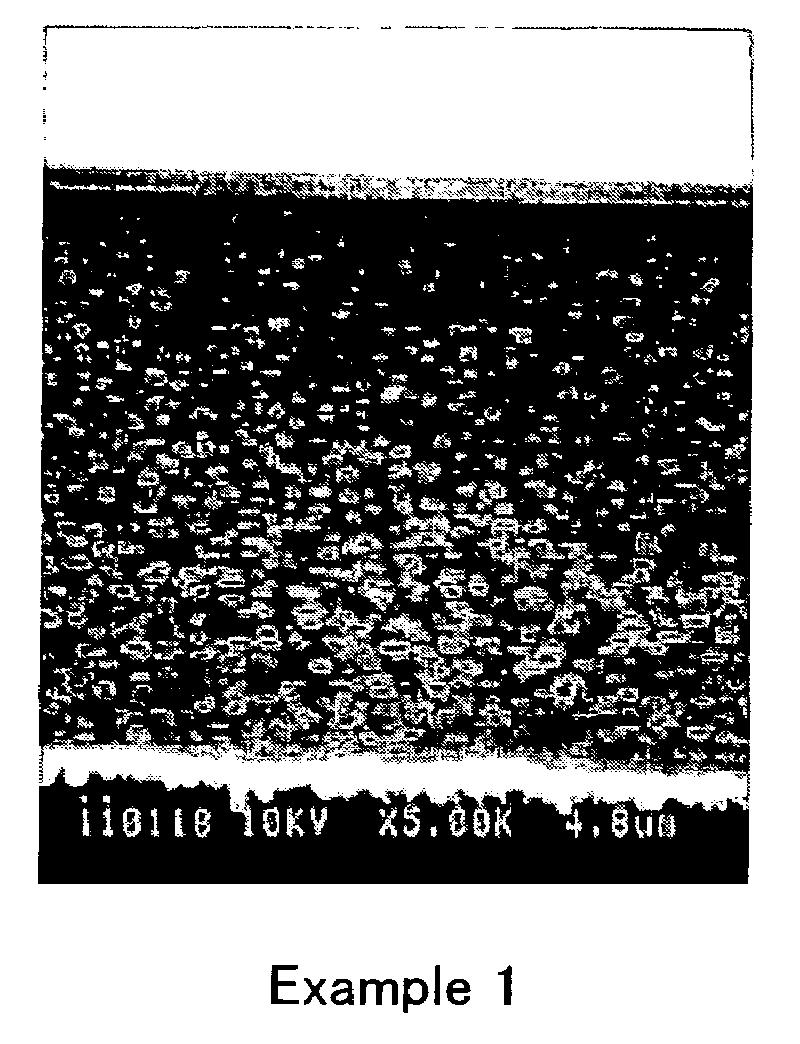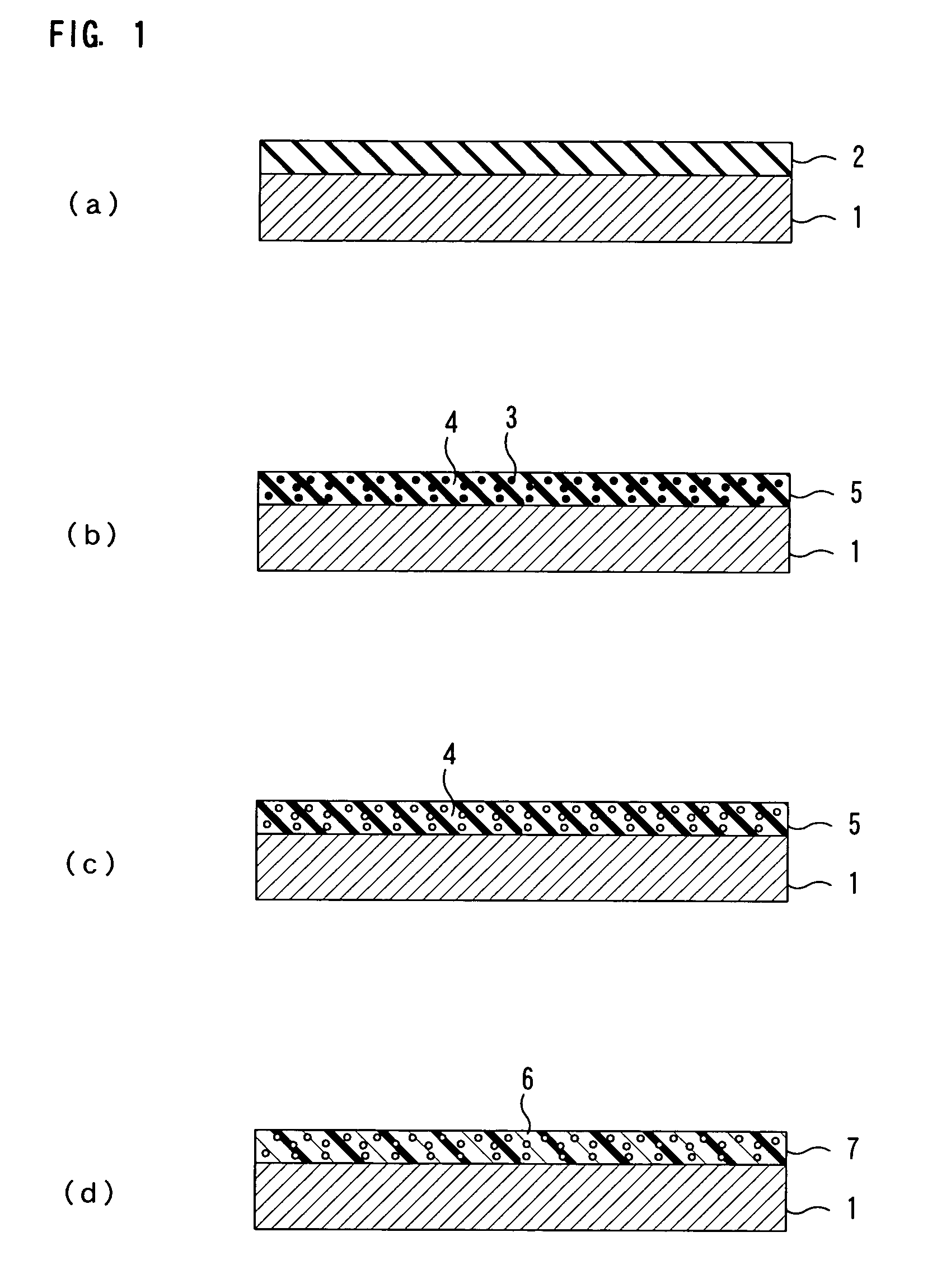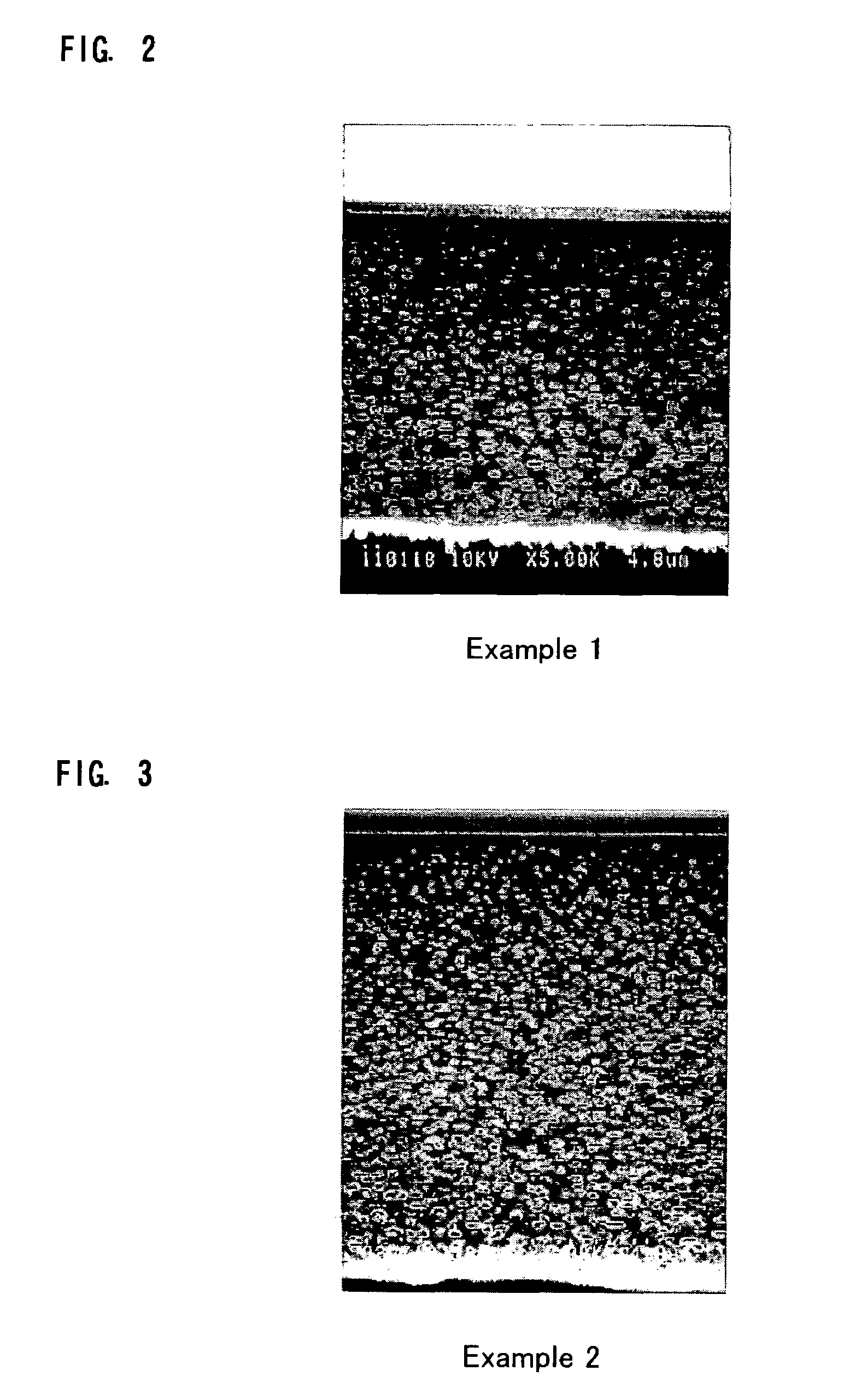Method for producing porous polyimide resin and porous polymide resin
a technology of porous polyimide resin and porous polyimide, which is applied in the direction of dielectric characteristics, high-frequency circuit adaptations, coatings, etc., can solve the problems of low porosity, inability to achieve sufficient dielectric constant reduction, and easy clogging of pores, so as to prevent flattening or clogging, good high-frequency characteristics, and good mechanical strength
- Summary
- Abstract
- Description
- Claims
- Application Information
AI Technical Summary
Benefits of technology
Problems solved by technology
Method used
Image
Examples
example 1
[0063]30 parts by weight of the solution of the precursor of polyimide resin obtained in the synthesizing example 2 was mixed with 70 parts by weight of the solution of the precursor of polyimide resin obtained in the synthesizing example 1, to obtain the mixed solution of the precursor of polyimide resin. Then, polyethylene glycol dimethylether having the weight-average molecular weight of 500 was blended in the mixed solution of the precursor of polyimide resin in the proportion of 66 parts by weight per 100 parts by weight of resin contents in the mixed solution of the precursor of polyimide resin and was stirred, to obtain transparent homogeneous resin solution.
[0064]Then, the resin solution thus obtained was applied to a stainless foil (SUS304) having thickness of 25 μm by using the spin coater so that the coating could have thickness of 21 μm after dried. Then, the resin solution was dried at 95° C. for ten minutes in a hot-air circulation oven to release NMP therefrom. Therea...
example 2
[0071]Except that polyethylene glycol dimethylether having the weight-average molecular weight of 500 was blended in the mixed solution of the precursor of polyimide resin in the proportion of 80 parts by weight per 100 parts by weight of resin contents in the mixed solution of the precursor of polyimide resin, to prepare the resin solution, the same operations as the operations of Example 1 were made to form the coating comprising the porous polyimide resin.
[0072]The SEM observation image of a sectional view of the coating comprising the porous polyimide resin obtained was made by the image processing. The result is shown in FIG. 3. The size of the pores (cells) calculated by the image processing was 0.194 μm. Also, the dielectric constant (ε) of the coating obtained was 2.200 (measuring frequency: 1 MHz).
PUM
| Property | Measurement | Unit |
|---|---|---|
| Temperature | aaaaa | aaaaa |
| Temperature | aaaaa | aaaaa |
| Particle size | aaaaa | aaaaa |
Abstract
Description
Claims
Application Information
 Login to View More
Login to View More - R&D
- Intellectual Property
- Life Sciences
- Materials
- Tech Scout
- Unparalleled Data Quality
- Higher Quality Content
- 60% Fewer Hallucinations
Browse by: Latest US Patents, China's latest patents, Technical Efficacy Thesaurus, Application Domain, Technology Topic, Popular Technical Reports.
© 2025 PatSnap. All rights reserved.Legal|Privacy policy|Modern Slavery Act Transparency Statement|Sitemap|About US| Contact US: help@patsnap.com



